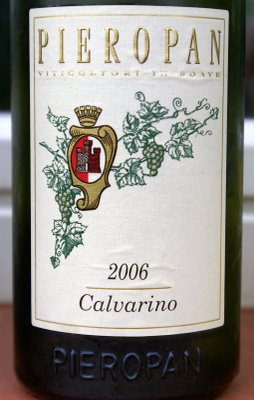Bertani: eternal
Bertani enjoys a cult status in Valpolicella. A tasting of 1976 and 1967 Amarone shows why it’s fully justified.
Bertani enjoys a cult status in Valpolicella. A tasting of 1976 and 1967 Amarone shows why it’s fully justified.
A brilliant lunch in Verona, and what it says about the current economic mood.
There’s still a lot of bad wine made under that name (drive from Verona to Vicenza and you’ll see hundreds of hectares under vine on the flat fertile clays by the railway line). Yet to dismiss Soave altogether would be a grave mistake. In fact, I consider it one of Italy’s leading appellations. This is thanks to some inherently great terroirs (predominantly volcanic tuff) and a generation of hard-working vintners that have elevated the DOC to its deserved glory: Suavia, Tamellini, Prà, Gini, Inama.
And then there is
Leonildo Pieropan, Soave’s patriarch making brilliant wines since the 1970s. His Calvarino and La Rocca crus (the latter the first Soave to age in new French oak) are benchmarks for Italian white wine. It’s always intersting to try the old man’s new vintages, so I was happy to pull the corks from the two following bottles.The Soave Classico 2007 is, in short, a relative disappointment. It shows a vague Soave typicity of raw apple, diluted lemony crispness, and nominal reductive minerality, but it’s really a simple and unassuming creature. Same on the palate, juicy with no special length or depth. It remains a reliable wine, at least European-poised and refreshing and terroir-driven, but I just expect more fireworks from the name Pieropan on the label. It’s consistent with the latest vintages of this bottling: I think some new vineyards were introduced and the production increased, and perhaps this drop in stature and structure is inevitable until these new plantings grow older.
 The Soave Classico Calvarino 2006, on the other hand, shows Pieropan in excellent shape. It drinks very well over three days and shows a real sense of place. Not overwhelmingly intense but has a strong mineral and acidic backbone that does wonders with food. Quite saline and active – this is real minerality, perhaps at the expensive of fruit which is much in the background (apple). Contrary to my expectations and despite coming from a warm, low-acid vintage this is everything but flabby. That’s clearly thanks to a 30% of the Trebbiano di Soave grape (the rest is Soave’s flagship grape, Gargànega), long despised for its low ripeness and aroma but now back in favour for the strong acidity (not to say greenness, as in this case) and minerality it lends to Soave wines. And it also lowers the alcohol – this wine is only 12.5%. An excellent bottle that needs a year or two more before peaking.
The Soave Classico Calvarino 2006, on the other hand, shows Pieropan in excellent shape. It drinks very well over three days and shows a real sense of place. Not overwhelmingly intense but has a strong mineral and acidic backbone that does wonders with food. Quite saline and active – this is real minerality, perhaps at the expensive of fruit which is much in the background (apple). Contrary to my expectations and despite coming from a warm, low-acid vintage this is everything but flabby. That’s clearly thanks to a 30% of the Trebbiano di Soave grape (the rest is Soave’s flagship grape, Gargànega), long despised for its low ripeness and aroma but now back in favour for the strong acidity (not to say greenness, as in this case) and minerality it lends to Soave wines. And it also lowers the alcohol – this wine is only 12.5%. An excellent bottle that needs a year or two more before peaking.